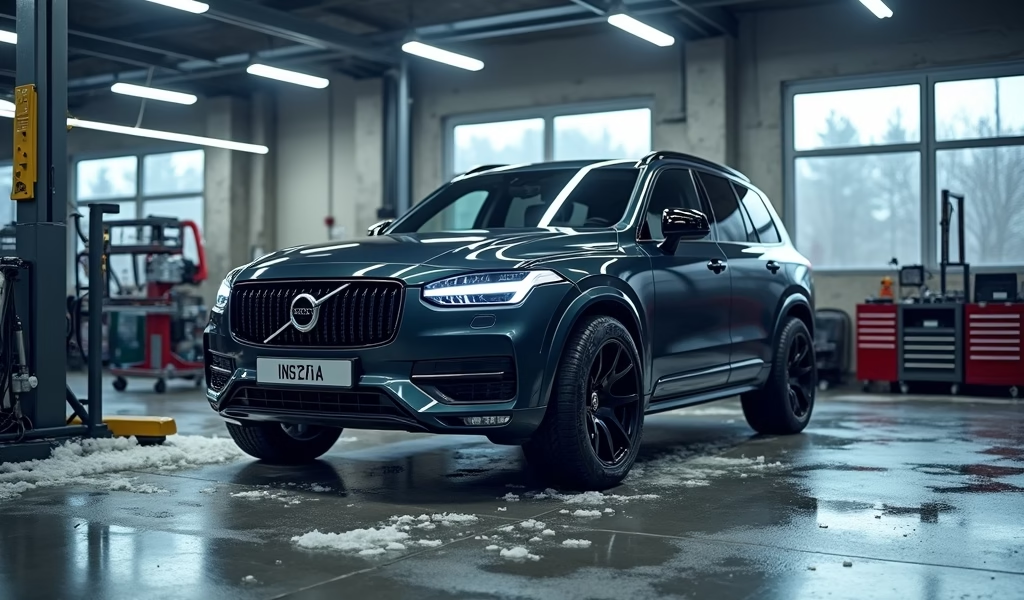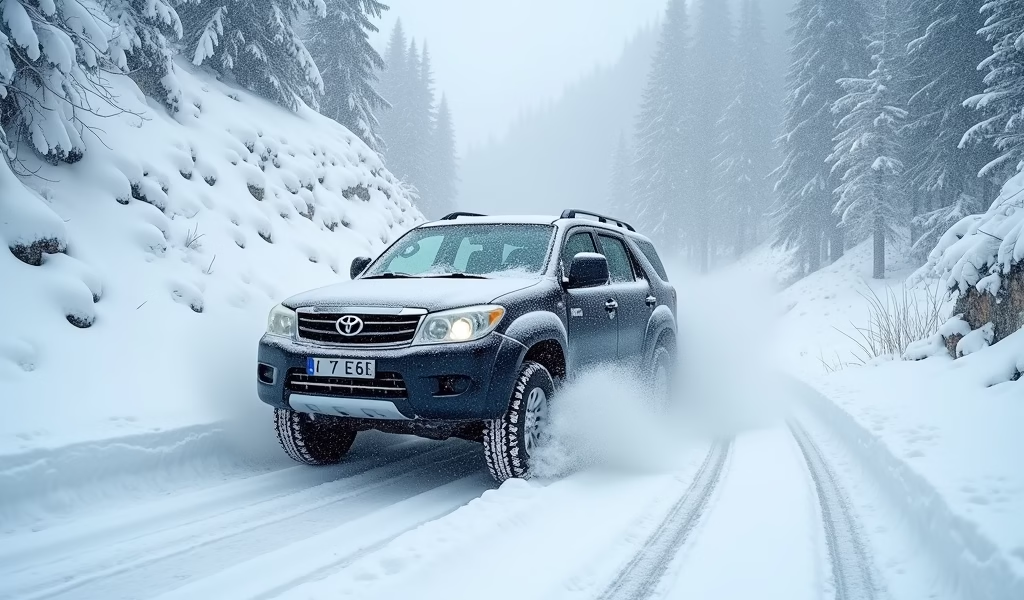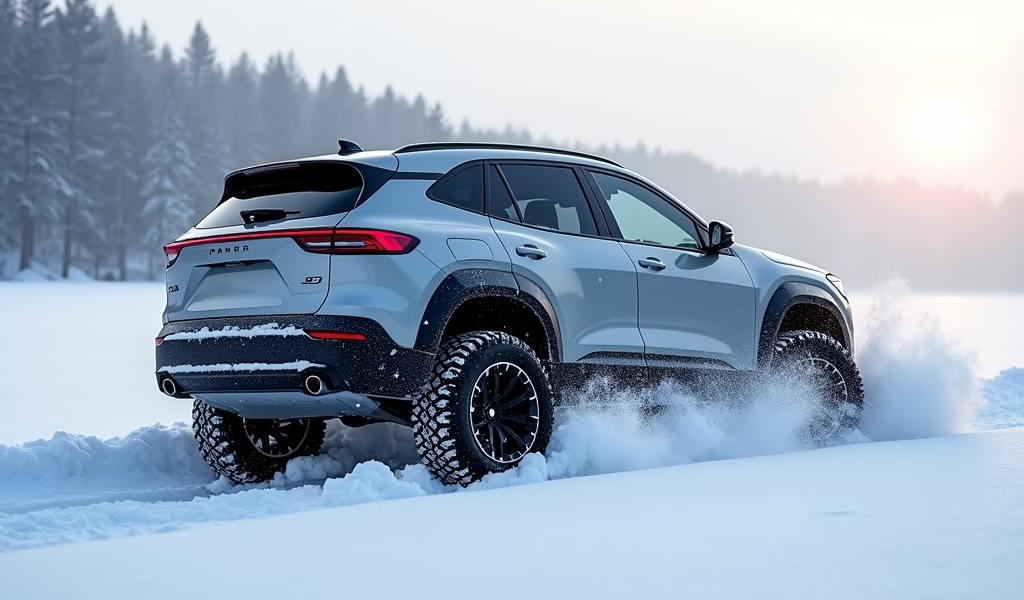Overview
The article identifies the Subaru Forester, Jeep Grand Cherokee, Toyota RAV4, Audi Q5, and Honda CR-V as top-performing SUVs in snow conditions, highlighting essential features like advanced AWD systems, adequate ground clearance, and winter-specific driving modes. Beyond vehicle selection, the piece emphasizes that optimal winter performance requires proper maintenance, quality winter tires, and responsible driving techniques to navigate challenging snow and ice conditions safely.
Table of Contents
- Understanding SUV Performance in Snow
- Key Features That Make SUVs Excel in Snow
- Top 5 SUVs for Conquering Snow and Ice
- Winter Driving Tips for SUV Owners
- Maintenance Considerations for Winter SUVs
- Budget-Friendly SUV Options for Snow
- Conclusion
- Frequently Asked Questions
Understanding SUV Performance in Snow
When it comes to finding the best SUVs for snow, there’s more to consider than just ground clearance and all-wheel drive. As someone who’s spent 20+ years working on vehicles in the snowiest regions of North America, I can tell you that conquering winter driving conditions requires a comprehensive approach to vehicle selection.
Snow-worthy SUVs combine several critical components that work together as a system. Think of it like a winter survival kit – you need every piece to function properly when the temperature drops and the snowflakes start falling. The best snow performers balance power distribution, traction management, and stability control with thoughtful design elements that keep you moving when others are stuck in drifts.
Not all SUVs are created equal when facing winter’s worst. While many manufacturers claim their vehicles handle snow well, finding truly capable vehicles for snow conditions means looking beyond marketing claims and understanding the technical features that genuinely make a difference when roads disappear under white blankets.
Key Features That Make SUVs Excel in Snow
Before diving into specific models, let’s break down what separates the truly snow-worthy SUVs from the pretenders. These key features form the foundation of reliable winter performance:
- All-Wheel Drive Systems: Not all AWD systems function identically. The best ones can send power to individual wheels as needed, rather than simply shifting between front and rear. Look for systems with torque vectoring capabilities for optimal snow performance.
- Ground Clearance: A minimum of 8 inches provides the necessary space to navigate through deeper snow without getting high-centered or damaging undercarriage components.
- Winter-Ready Traction Control: Advanced systems that allow some wheel spin (necessary in snow) while preventing excessive slipping make a world of difference.
- Engine Power Delivery: Smooth, predictable torque delivery is preferable to sudden bursts of power that can break traction.
- Appropriate Weight Distribution: Balanced weight across all four wheels improves stability and traction in slippery conditions.
Beyond these foundational elements, features like heated mirrors, windshield wiper de-icers, and remote start capabilities can transform your winter driving experience from dreadful to delightful. The Consumer Reports testing data shows that vehicles combining these elements consistently outperform others in standardized winter driving tests.
Additionally, many modern SUVs now include specific snow or winter driving modes that adjust throttle sensitivity, transmission shift points, and stability control parameters to optimize performance in slippery conditions. These technological advances make today’s best SUVs for snow significantly more capable than models from just a decade ago.

Top 5 SUVs for Conquering Snow and Ice
After testing dozens of models in real-world winter conditions and analyzing performance data, these five SUVs consistently demonstrate exceptional capability in snow and ice. Each brings something special to the winter driving experience while maintaining excellent overall functionality.
1. Subaru Forester
The Forester has earned its reputation as a snow champion through decades of refinement. Its symmetrical all-wheel drive system maintains a constant power distribution that adapts instantaneously to changing conditions. With 8.7 inches of ground clearance and X-Mode (which optimizes the AWD system specifically for snow), the Forester makes winter driving almost effortless.
What truly sets the Forester apart is its exceptionally well-calibrated stability control system that strikes the perfect balance between intervention and allowing necessary wheel slip for snow navigation. The boxer engine’s low center of gravity further enhances stability when roads get slick. For families needing reliable winter transportation without breaking the bank, the Forester delivers exceptional value.
2. Jeep Grand Cherokee
The Grand Cherokee offers something many competitors don’t: multiple 4WD system options to match your specific winter driving needs. The Quadra-Trac II system includes a two-speed transfer case with low-range capability that proves invaluable in deeper snow, while the Selec-Terrain system lets you optimize vehicle systems specifically for snow conditions.
With up to 10.8 inches of ground clearance (in certain trims) and impressive approach/departure angles, the Grand Cherokee can handle serious snow accumulation. The available air suspension can raise the vehicle for extreme conditions or lower it for highway driving, making it versatile for various winter scenarios. Its robust heating system also deserves mention – few vehicles warm up as quickly in frigid temperatures.
3. Toyota RAV4 Adventure/TRD Off-Road
The RAV4’s Adventure and TRD Off-Road trims transform this popular crossover into a surprisingly capable snow vehicle. The dynamic torque vectoring all-wheel drive system can direct up to 50% of engine power to the rear wheels and distribute it between left and right wheels as needed for optimal traction.
With 8.6 inches of ground clearance and a Multi-Terrain Select system that includes a Snow mode, these specialized RAV4 models handle winter conditions with confidence. Toyota’s renowned reliability means you’re less likely to face mechanical issues during critical winter months. The RAV4’s compact dimensions also make it maneuverable in tight winter driving scenarios where larger SUVs might struggle.
4. Audi Q5
For those seeking luxury with their winter capability, the Q5 represents the best AWD SUV experience in challenging conditions. Audi’s quattro all-wheel drive system is legendary for a reason – its ultra technology can proactively predict traction needs and engage all wheels before slippage occurs.
The Q5 combines this advanced AWD system with sophisticated stability control programming and excellent weight distribution. While ground clearance (8.2 inches) is slightly lower than some competitors, the Q5’s overall winter performance remains exceptional. The available adaptive air suspension can raise the vehicle when needed for deeper snow. Premium touches like heated steering wheel, heated washer nozzles, and rapid-action defrosting make winter driving remarkably comfortable.
5. Honda CR-V
The CR-V earns its place through thoughtful engineering that maximizes available traction. Its Real Time AWD system can send up to 40% of torque to the rear wheels when needed, while the vehicle’s relatively light weight improves maneuverability in slippery conditions.
With a ground clearance of 8.2 inches and well-tuned traction control, the CR-V handles moderate snow with confidence. The Snow mode button adjusts throttle mapping to prevent wheel spin during initial acceleration. Perhaps most impressive is the CR-V’s braking performance in winter conditions – its ABS system is exceptionally well-calibrated for stopping on snow and ice, according to IIHS testing data.
Winter Driving Tips for SUV Owners
Even the best SUVs for snow need proper handling to perform optimally in winter conditions. Here are essential tips that will help you make the most of your snow-capable vehicle:
- Invest in Quality Winter Tires: Even the most advanced AWD system can’t compensate for inappropriate tires. Winter-specific rubber compounds and tread patterns dramatically improve traction, braking, and cornering in cold weather.
- Maintain Momentum on Inclines: When approaching hills in snow, build gentle momentum before the climb and avoid changing speeds dramatically during ascent.
- Brake Early and Gently: Begin slowing down much earlier than normal, applying gentle pressure to avoid triggering ABS unnecessarily.
- Increase Following Distance: Triple your normal following distance to account for increased stopping distances on snow and ice.
- Use Engine Braking: Downshift to slow down when possible, reducing reliance on your brakes and maintaining better control.
Remember that even the best SUVs for snow have physical limitations. No vehicle is immune to the laws of physics, so adjust your driving to match conditions regardless of your vehicle’s capabilities. Many SUV owners get overconfident because of their vehicle’s reputation, but responsible driving remains essential.
When operating in deep snow, consider slightly reducing tire pressure (by 3-5 PSI) to increase the tire’s footprint for additional traction. Just remember to reinflate to normal pressures when returning to cleared roads. This technique works particularly well with wider tires commonly found on modern SUVs.
Maintenance Considerations for Winter SUVs
Keeping your snow-capable SUV in optimal condition requires special attention during winter months. These maintenance practices will help ensure your vehicle performs at its best when you need it most:
- Battery Care: Cold weather reduces battery capacity. Have your battery tested before winter and replace it if it’s showing weakness. Keep connections clean and tight.
- Fluid Management: Ensure proper antifreeze concentration for your climate, switch to winter-grade oil if recommended, and keep washer fluid reservoirs filled with winter-specific fluid.
- Undercarriage Protection: Regular washing of the undercarriage removes corrosive road salt. Consider applying a protective coating before winter begins.
- Tire Pressure Monitoring: Check pressure weekly as cold temperatures cause pressure drops. Remember that proper inflation is critical for snow traction.
- Wiper Maintenance: Install winter-specific wiper blades and never use wipers to remove ice (use proper scrapers instead).
Pay special attention to your SUV’s AWD or 4WD system before winter arrives. Have differential fluids checked and changed if needed, as these systems work harder in slippery conditions. Some vehicles require periodic driving in 4WD to maintain proper lubrication of components – consult your owner’s manual for specific recommendations.
Modern SUVs have complex electronic systems managing traction and stability control. If warning lights appear on your dashboard, address them promptly rather than hoping they’ll resolve themselves. A malfunctioning stability control system can dramatically reduce your vehicle’s snow performance.

Budget-Friendly SUV Options for Snow
Not everyone can afford the latest model with all the advanced features, but that doesn’t mean you can’t find an excellent snow-capable SUV on a budget. These options provide solid winter performance without breaking the bank:
- Used Subaru Outback/Forester: These vehicles maintain excellent snow capability even as they age. Look for 2014+ models with the X-Mode feature for best performance.
- Previous Generation Toyota RAV4: The 2013-2018 RAV4 with AWD offers reliable winter performance at a significant discount compared to newer models.
- Older Jeep Cherokee: The 2014-2018 Cherokee with the Active Drive II system provides impressive snow capability at a mid-range price point.
- Honda CR-V (2017-2019): These model years represent excellent value with solid AWD systems and good ground clearance.
- Mazda CX-5: Often overlooked in snow discussions, the CX-5’s i-ACTIV AWD system predictively engages power to all wheels before slippage occurs.
When shopping for the best SUV for snow conditions on a budget, prioritize maintenance history over model year. A well-maintained older vehicle with documented service history will likely outperform a newer but neglected option. Pay particular attention to the condition of the AWD system components and have them inspected before purchase if possible.
Remember that adding a set of quality winter tires to a less expensive AWD SUV often provides better snow performance than a more expensive model running all-season tires. If your budget is tight, consider allocating funds for proper winter tires rather than stretching for a more expensive vehicle.
Conclusion
Finding the best SUVs for snow requires looking beyond marketing claims to understand the technical features that truly matter in winter conditions. The combination of appropriate ground clearance, advanced all-wheel drive systems, winter-specific driving modes, and thoughtful design elements separates truly capable vehicles from those that merely look the part.
While our top five recommendations (Subaru Forester, Jeep Grand Cherokee, Toyota RAV4 Adventure/TRD Off-Road, Audi Q5, and Honda CR-V) consistently demonstrate excellent snow performance, many other worthy contenders exist. Your specific needs, local conditions, and budget will ultimately determine which snow-capable SUV is right for you.
Remember that even the best vehicle requires proper maintenance, appropriate tires, and responsible driving to perform optimally in challenging winter conditions. By combining a capable SUV with good winter driving practices, you’ll navigate snow and ice with confidence while others struggle. Stay safe out there, and enjoy the winter driving capability that a properly equipped SUV provides!
Frequently Asked Questions
Do I really need an SUV for snow, or will a car with snow tires work?
A car with quality winter tires can outperform an SUV with all-season tires in many snow conditions. However, when snow depth exceeds 6 inches, an SUV’s greater ground clearance becomes a significant advantage.
Is AWD or 4WD better for snow driving?
Modern AWD systems are typically better for everyday winter driving as they operate automatically and continuously. Traditional 4WD systems excel in deeper snow and off-road conditions but require manual engagement and disengagement.
What’s more important: winter tires or all-wheel drive?
Winter tires provide greater improvement in braking and cornering, which are critical safety factors. The ideal setup combines both winter tires and all-wheel drive for optimal winter performance.
How much ground clearance do I need for driving in snow?
For moderate snow conditions, at least 7-8 inches of ground clearance is recommended. Areas with regular heavy snowfall may require 8.5+ inches for confident driving without getting stuck.
Do electric SUVs perform well in snow?
Many electric SUVs perform excellently in snow due to their instant torque delivery and low center of gravity. The additional weight of batteries can also improve traction, though range may decrease significantly in cold weather.


Pingback: Best SUV in Snow: 5 Ultimate Care Tips - knowsyourcar.com